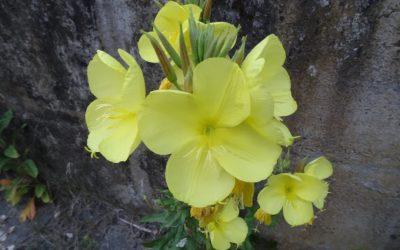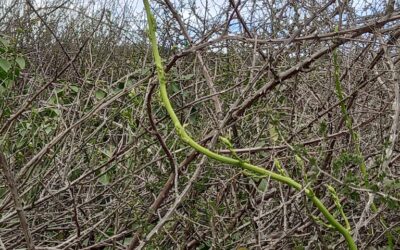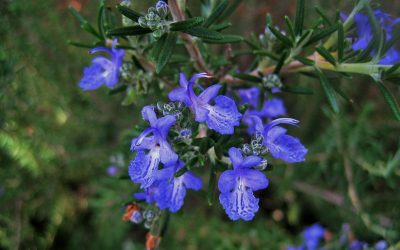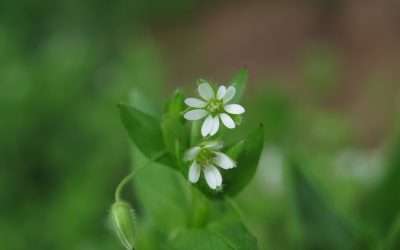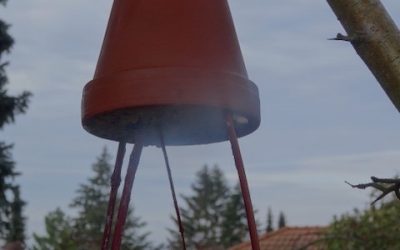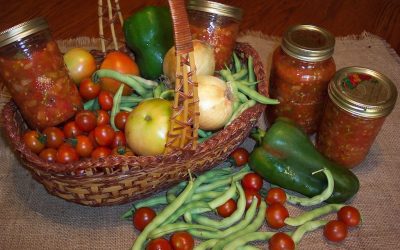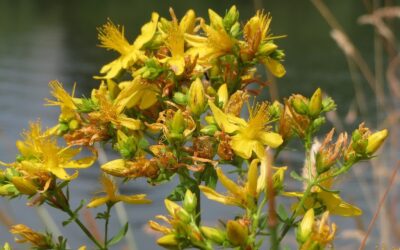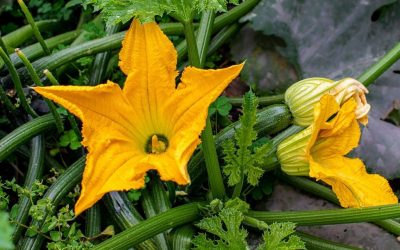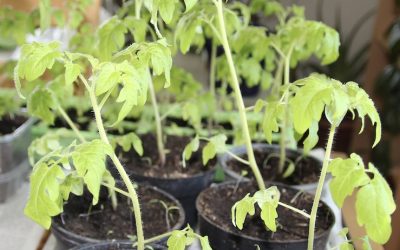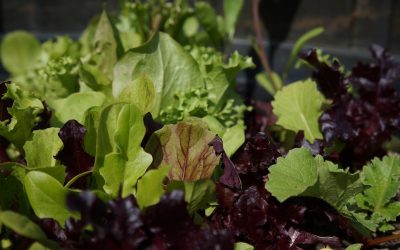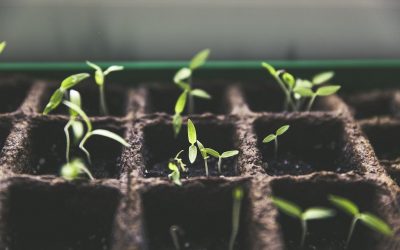Nature Notes:
Lughnasad – Harvest Time
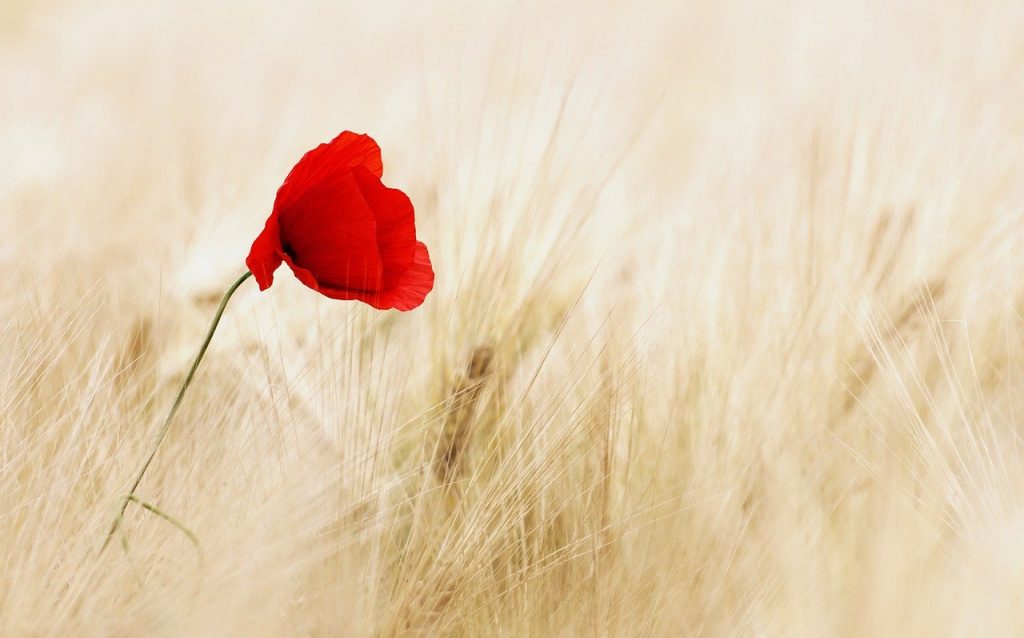
The time of the grain harvest
Lughnasad marks the harvest season. Fruits and vegetables ripen, the grain has turned golden, and the grapes are getting plump and sweet. It is an intensely busy time, especially for gardeners. We toiled in the spring, and now it is time to harvest the fruit of our labour and enjoy the gifts of the season.
The period from spring to late summer is joyous, but also fraught with danger. Late frosts can kill sensitive starts, and summer storms or wildfires may ruin a crop in just a few minutes. A good harvest is never guaranteed. Every year, the devastating effects of climate change are becoming increasingly evident, endangering the agricultural practices on which our lives have come to depend. Where I am, after many years of exceedingly hot and dry springs and summers, this year we had unseasonably wet weather. Without water, there is no life. But too much water can be devastating, especially when it falls as rain, all at once, washing away the topsoil, and drowning plants and animals and flooding basements and worse.
In the Christian tradition, Lammas marks the harvest season. The name comes from the Anglo-Saxon word ‘hlaf-mas’, meaning ‘loaf mass’. Bread and wine are the traditional sacraments of the Eucharists. It is the time of the ripening corn, and the grape harvest.
But the harvest is only one stage of the perpetual cycle of life. Ideally, what we reap now should sustain and nourish us through the dark season, when the Earth is barren and still. Part of the harvest is set aside and returned to the earth. We reap as we sow, but we also sow what we reap.
Facing the unravelling climate catastrophe, we are grateful for anything we can harvest today. But if we want to continue on the agricultural path, we must learn to adapt and live more sustainably. We depend on Mother Earth, and it is time to honour and respect all that she provides.
There are many solutions, but continuing in the ‘business-as-usual’ mode is not among them.
Current issue
Plant Profile: Poppy (Papaver somniferum)
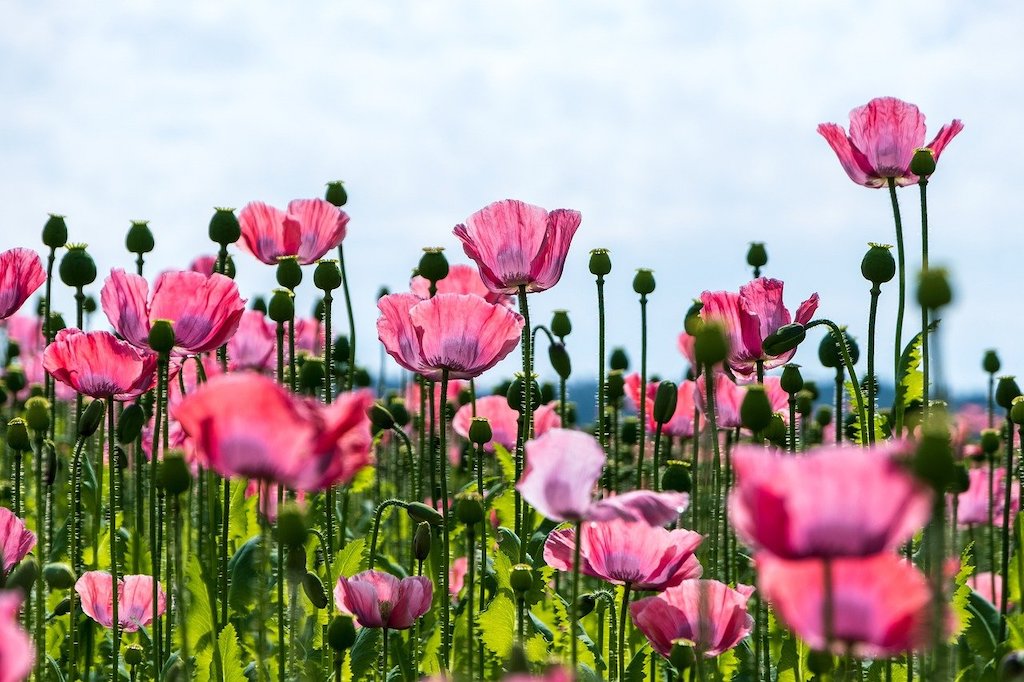
The Mysterious History of the Opium Poppy
| Opium Poppy | Papaver somniferum |
| Synonyms | Opium Poppy, Mawseed, Herb of Joy, Mohn, Klapper-Rosen, Mago, Magesamen, Weismagen, wilder Magen, Magensaph, Rosule |
Description:
Opium Poppies are nothing if not showy. Their sturdy stems and large leaves make a stark contrast to their large but oddly flimsy flowers. The delicate petals give the impression of a butterfly that is just about to take off. At the base of the flower sits a prominent, many-rayed stigma surrounded by a mass of stamens. After the flower has been fertilized, the petals drop off, leaving the seed capsule exposed as it swells and ripens like a pregnant belly.
Individual plants grow to between 70 cm, and 130 cm tall. The erect stems and large wavy leaves have a tough, rubbery texture. The leaves are indented and clasp the stem. All green parts of the plant are covered by a greyish-blue waxy substance that is easily rubbed off. Botanists describe this feature as glaucous.
When any green part is cut or wounded, a milky latex oozes out and turns brown as it dries. This substance is known as raw opium.
The seed capsule of Papaver somniferum is almost spherical and has a star-shaped, flattened lid. As it dries, the top shrinks and lifts. Tiny holes are formed underneath the rim, allowing the tiny, white or bluish-black seeds can disperse.
Origin and Distribution
It is difficult to establish with any certainty just where Papaver somniferum originated or who its genetic parents might have been. But, most researchers now agree that the Mediterranean region of Asia Minor is its most likely ‘original home’.
From this strategically advantageous position, they spread east into Asia, south into North Africa and north into Central Europe. Today, poppies are even found as far north as Britain. Poppies are popular as ornamentals, and breeders have developed dozens of varieties of different colours and flower arrangements.
The Papaver genus comprises about 100 species that occur throughout the temperate regions of the world. Poppies like to grow in association with corn. In early summer, the related Scarlet Poppy (Papaver rhoeas) can often be seen in cornfields and verges. This species is much smaller, has scarlet-red petals and small, elongated seed capsules. Although the Scarlet Poppy has historically also been used medicinally, its action is much milder than that of Papaver somniferum.
Opium Poppies are not native to the New World. But when they appeared on their shores, Eastern tribes adopted their medicinal uses, which they learned from the Europeans.
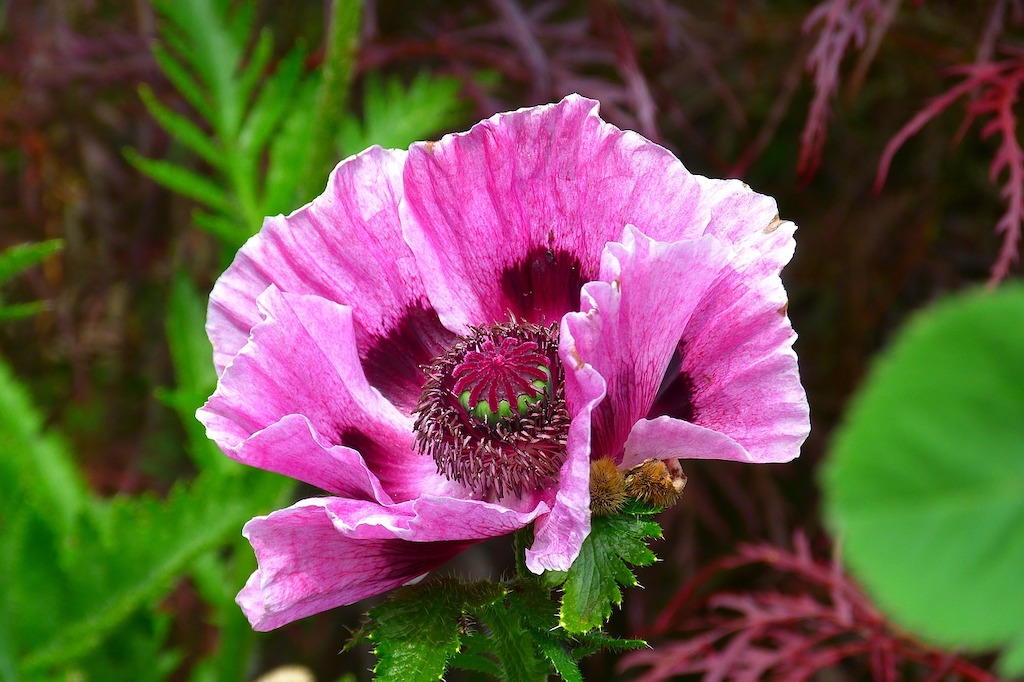
The delicate Poppy flowers are beautiful to behold. Their papery petals gently waft in the summer's breeze - alas, it is a short-lived beauty. Here one day, gone the next. The fleeting splendour only lasts a few days before the petals fall, revealing a bulging seed pod.
The seed pods hold a myriad of tiny poppy seeds, a familiar item of the kitchen larder. We use them as toppings of bread rolls and bagels, or as cake fillings. Less commonly available is the delicately nutty seed oil, highly esteemed in gourmet cuisines.
But poppy has a secret power, and it flows within its fleshy stems, leaves and unripe seed capsules: its milky latex.
When it oxidizes and dries, the latex turns brown and becomes what the Ancients knew as 'opion'. This substance has been used for thousands of years. In the days of blood and gore, opion was a god-sent pain-reliever. Even today, the most effective pain relievers are still predominantly based on it.
Thanks to its potent analgesic and hypnotic properties, Opium relieves not only physical but also emotional pain. But woe to those who are seduced by it. Taken too regularly, it entraps the body and chains the mind to addiction, causing delusion, apathy, and even death.
Yet, in the words of Paracelsus:
"What is there that is not poison? All things are poison, and nothing is without poison. Solely the dose determines that a thing is not a poison.”
Our age-old relationship with poppies proves the point. Throughout history, it has brought great relief but also suffering and death.
Historical record
Archaeological evidence suggests that humans have used poppies since pre-historic times. Archaeobotanists have found charred remains of poppies and opium at Neolithic settlements, burial sites and even in the tombs of Egyptian Pharaohs. The latter were even decorated with paintings of Opium Poppy, Mandrake and Blue Water Lily - all considered magical plants connected to the underworld gods.
The earliest written record was found in Sumer and dates back to about 2000 B.C. It refers to poppies as 'Hul Gil' - the Herb of Joy. From Sumer, the knowledge and use of poppies spread throughout the Middle East to Babylonia, Assyria and Egypt, Persia and Greece.
They are mentioned in the famous Egyptian Eber's Papyrus (1500 B.C.), which recommends them as a remedy to calm incessantly crying babies. Remarkably, this use has persisted until the beginning of the 20th century in parts of North Africa and Europe. It certainly kept children quiet, but it also reduced their natural curiosity, thus dimming their wits.
From Hippocrates to Avicenna, Dioscorides and Galen - all the ancient medical texts mention opium as an effective painkiller and sedative.
Dioscorides offers a detailed description of how to obtain the latex:
"Those who wish to obtain the sap (of the Poppy) must go after the dew has dried, and draw their knife around the star in such a manner as not to penetrate the inside of the capsule, and also make straight incisions down the sides. Then with your finger wipe the extruding tear into a shell. When you return to it not long after, you will find the sap thickened, and the next day you will find it much the same. Pound the sap in your mortar and roll the mass into pills."
[/et_pb_text]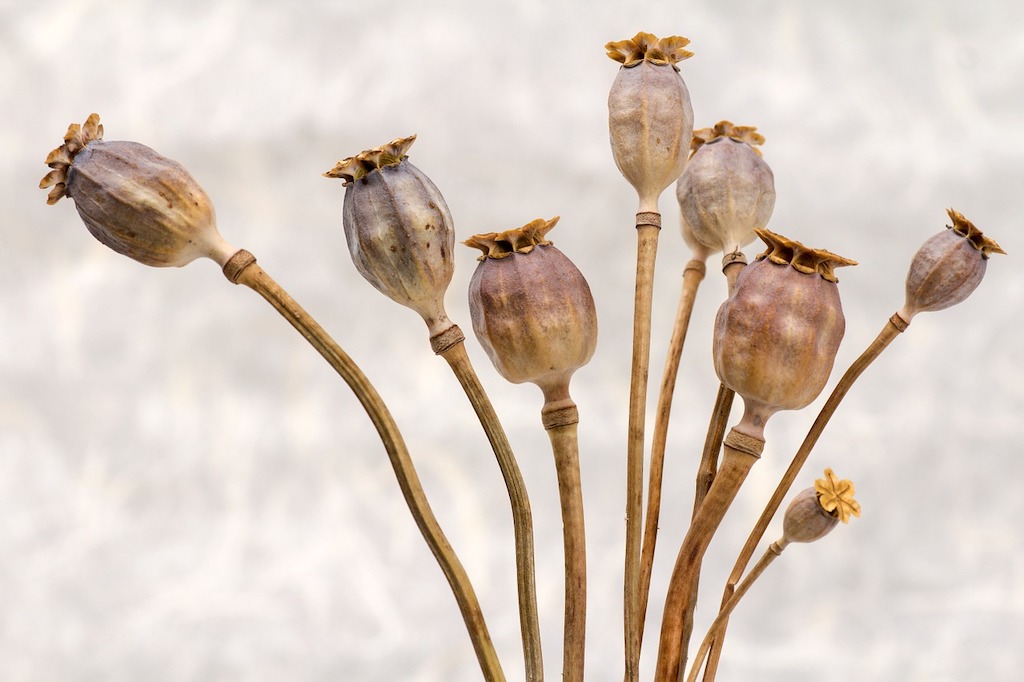
Poppies were considered sacred to Hypnos, the Greek god of sleep, and they guarded the entrance to his drowsy realm. Hypnos is often depicted holding the seed capsules in his hands and adorning his head. He brought prophetic dreams and soothed emotional pain with forgetfulness.
At the temple of Aesclepius on the Greek island of Cos, poppies were used in a kind of sleep therapy. Aesclepius is a god of healing, but the only medicine he prescribed was a potent brew of opium and other herbs, while the therapeutic recommendations were revealed directly to the patients via visionary dreams.
The Romans identified Hypnos with their god of sleep, 'Somnus', who lent his name to poppies scientific nomenclature. 'Somniferus' comes from the Latin 'somnus ferre', - bringer of sleep.
Poppies had a strong association with the gods of the Underworld. In Greek mythology, they were sacred to Thanatos or Hades, the Lord of the Underworld, and ruler of the realm of the dead. Excessive doses of opium can bring eternal sleep.
But they were also sacred to Demeter, the Earth-Goddess, who taught humankind the art of agriculture and particularly the cultivation of grains such as wheat and barley. Demeter was, of course, inconsolable when Hades abducted her daughter Persephone. Only poppies managed to soothe her pain. Poppies love mingling among the cornfields, and their bulging seed pods, containing an abundance of tiny seeds, serve as a perfect symbol of fertility.
Some scholars believe that opium was a chief ingredient of the secret ritual drink served at the Elysian Mystery rites. Unfortunately, the recipe ranks among the best-kept secrets of the ancient world, so we will never know for sure.
Mythology tells us that poppies sprang from Aphrodite's tears as she mourned the loss of her lover, Adonis. In ancient times, her birthplace, the island of Cyprus, was a major centre of poppy cultivation and trade.
[/et_pb_text]Folk Magic
Poppy's association with the goddess of love is also reflected in its relaxing aphrodisiac properties. Opium was very popular in folkloristic love magic. During the Middle Ages, it was the ingredient of choice for love charms, philtres and potions. Poppies were also tasked with predicting the fortunes of lovers. To learn the identity of a future spouse or divine the outcome of a love affair, the inquirer would write his question on a piece of parchment and place it inside a poppy seed capsule. The seed pod was then placed under the pillow until a prophetic dream would reveal all.
Naturally, love associates with fertility. The belly-like seed pod full of seeds makes an apt symbol not just of fertility, but also of prosperity. On New Year's Eve, giving gifts of poppy sweetbread served as tokens of prosperity blessings, while the seed capsules were used as a fertility charm.
Invisibility was also considered one of the poppy's magic powers. For this purpose, it was included in a magic potion. This use is probably linked to the myth of Persephone. It is believed that Hades' wore a cap of invisibility that resembled a poppy seed pod when he abducted Persephone.
Yet, poppy seeds are also said to be anti-demonic. If one found such nasty creatures hard on one's heels, all one had to do to get rid of them was to toss some poppy seeds in their direction. Apparently, demons and vampires are compelled to count everything. A handful of scattered poppy seeds would keep them busy long enough to allow you to escape.
From traditional herbal medicine to potent pharmaceutical drug and addiction
Opium was widely used in the ancient world, but it was Andromachos, the personal physician of Emperor Nero, who popularized it. One day, Nero challenged Andromachos to create a true panacea, a remedy that would ease all pain and diseases. The physician came up with a potent potion consisting of about sixty different plants and substances, including opium, which he called 'Theriak'. Later, Galen refined the brew and renamed it Galene. It became so popular throughout Europe that it rose to the status of a miracle cure. But the potion was expensive, and some ingredients were difficult to obtain, which led to adulteration.
During the Middle Ages, medicine became 'heroic' - in other words, unsympathetic, and patients were expected to simply bear their pain. The use of opium as a painkiller declined. But eventually, Paracelsus revived it by creating a stripped-down version of the original Theriak recipe, which proved extremely effective and soon surpassed even the success of the original. He compounded his concoction into pill form and called it 'Laudanum Paracelsi'.
Laudanum
He had managed to make his painkiller even more effective by the simple addition of lemon juice. The acid subtly changes opium's chemistry and enhances its anodyne action. For a long time, Laudanum was a celebrated panacea, believed to be effective for every ailment except leprosy.
The somewhat hyperbolic reputation meant that it was often in short supply. But it also pricked scientific curiosity and inspired numerous experiments. It even gave rise to the groundbreaking invention of the hypodermic needle. In 1656, Sir Christopher Wren first employed a syringe to prove the theory of blood circulation. He injected a dog's hind leg with a solution of opium, and sure enough, the drug rapidly took effect over the dog's entire body.
In 1680, the English Doctor Thomas Sydenham revised Paracelsus' potion once again. His aim was to purify the raw drug and rid it of impurities that seemed to cause 'sickness' when taken in large quantities. He added sherry wine, saffron, cinnamon and cloves to Paracelsus' Laudanum and renamed it 'Sydenham's Laudanum'. It was no more effective than the original, but it kicked off a new wave of enthusiasm for opium-based products. Soon every chemist seemed to market their own blend. Venice Treacle, Mithridate, London Laudanum and Dr Bate's Pacific Pills all became popular household names. But the available raw opium could barely keep up with the demand.
Laudanum was as popular as aspirin is today. Physicians routinely prescribed twice-weekly preventative dosing. Alas, sometimes too much of a good thing proves, well..., too much.
Overprescription and Addiction
It was at this time that overprescription led to the first cases of serious opium addiction. The problem was compounded by the fact that Laudanum was even overprescribed for children. But the problem with an addictive substance such as opium is that frequent dosing increases the body's resistance, and larger amounts are required to get the same results.
In 1700, Dr John Jones published a book called 'The Mysteries of Opium Revealed'. In the course of about 400 pages, he extolled the properties of opium. Describing its uses and effects, he also reported on its pleasant side effects and symptoms of addiction. Although his work was clearly biased and likely to have been influenced by his own intimate relationship with the subject, it did contain a grain of genius. Jones was the first to intuit that opium actually imitated substances that are already present in the body. But it took another 275 years before scientists discovered these substances, which subsequently became known as endorphins.
Morphine
Debate and experimentation continued. In 1799, Friedrich Sertürner, a young German pharmacist's apprentice, observed that the effects of opium seemed to vary considerably from batch to batch. He became convinced that this must be due to the varying presence of an active constituent in the raw opium. After only four years of experimentation, he managed to isolate such a substance. In allusion to the Greek god of sleep, he called 'morphine'. But he wrongly believed that this purified compound was free of the unpleasant characteristics of opium. He had assumed that morphine was safer because only a tiny amount of it was necessary to induce far stronger effects than those of raw opium. But neither he nor anyone else at the time realized that it was also far more addictive. Soon, several pharmaceutical companies started to churn out morphine by the boatload. At the same time, Wren's earlier invention for injecting opium was perfected and morphed into what we now know as the hypodermic syringe. The improvement was celebrated as a great success, since the administration of morphine via a syringe tripled its efficacy.
The story of opium epitomizes the risk of relying on science to solve all our problems. Sometimes the solution to one problem engenders new ones that we only fully grasp much later.
(The history of poppy also has a very interesting, dark and thought-provoking political aspect, which, however, is beyond the scope of this article. Those interested in this plant and its impact on world history should read up on the opium wars - the consequences of which still linger.
Plant Profile:
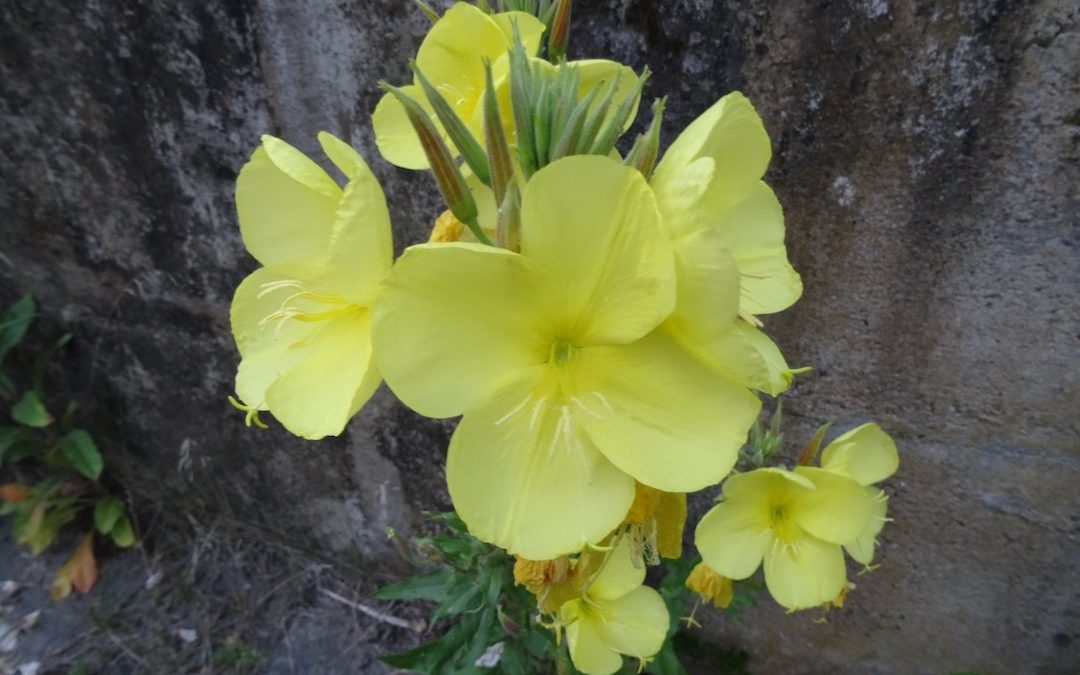
Foraging: Evening Primrose (Oenothera biennis)
Foraging Evening Primrose (Oenothera biennis)
Autumn is my favourite foraging time. The seeds are ripening, the nuts are swelling, and mushrooms are making their elusive appearances. Even when things have seemingly died off, one can dig for roots and rhizomes below ground.
Evening Primrose is a great autumn crop for foragers. The tall, lanky stalk with the large, somewhat ghostly, pale yellow flowers is a familiar sight. Yet its true beauty is revealed at night when the flowers open fully and their subtle scent perfumes the air.
Habitat
Evening Primroses are not particularly fussy. They are happy with poor, sandy soil as long as it gets enough sun. Waste grounds, railway track embankments, neglected corners of the yard all provide a happy habitat for them.
Edible parts:
All parts of the Evening Primrose are edible.
Leaves:
Evening primrose is biennial, forming a rosette in the first year and the stalk and flowers in the second year. The leaves of both the first and the second year’s growth can be cooked or used fresh – but they are a bit hairy, and may not be to everyone’s liking. Try a small amount first to see if you like the flavour, or mix them with other herbs.
Flowers:
Evening Primrose has a long flowering season, from June to September. The early flowers only open in the evenings, exuding a beautiful, sweet scent. Later, they open during the day as well. The flowers are mildly sweet-tasting and can be used to decorate salads. Or try the buds before they open in stir-fries and such.
Seeds:
The seed pods ripen in the autumn. The elongated capsules contain quite a lot of tiny seeds. But if you think you might be able to press your own Evening Primrose Oil, I’ll have to disappoint you. The seeds are minuscule. It would require a ton of them to make the endeavour worthwhile. And, what’s more, the pressure needed to press the seeds is so great that it would produce a lot of heat, which would destroy the beneficial properties of the oil. Try using them like poppy seeds instead. But don’t expect to get a lot of nutritional value from them. The amounts typically used in cooking and baking are too small for that. Grind the seeds before adding them to your recipes to release the oil. Left whole, they would simply pass straight through the digestive system without leaving a trace of their nutritional benefits.
Read more about the medicinal properties of Evening Primrose Oil
Roots:
The roots are perhaps most interesting for the forager. But remember that only the first years’ root is used, which is easily identifiable by its distinctive rosette, before the stalk begins to push up. The flowering shoot does not form until the spring of the second year. By this time, it would be too late to dig for the root. But, look around the ground near a stand of second-year plants, and you will soon spot some yearlings. It can be hard work to dig up the long reddish taproot unless the soil is very light. But they make an unusual root vegetable for bakes and stews with a slightly peppery taste, reminiscent of black salsify.
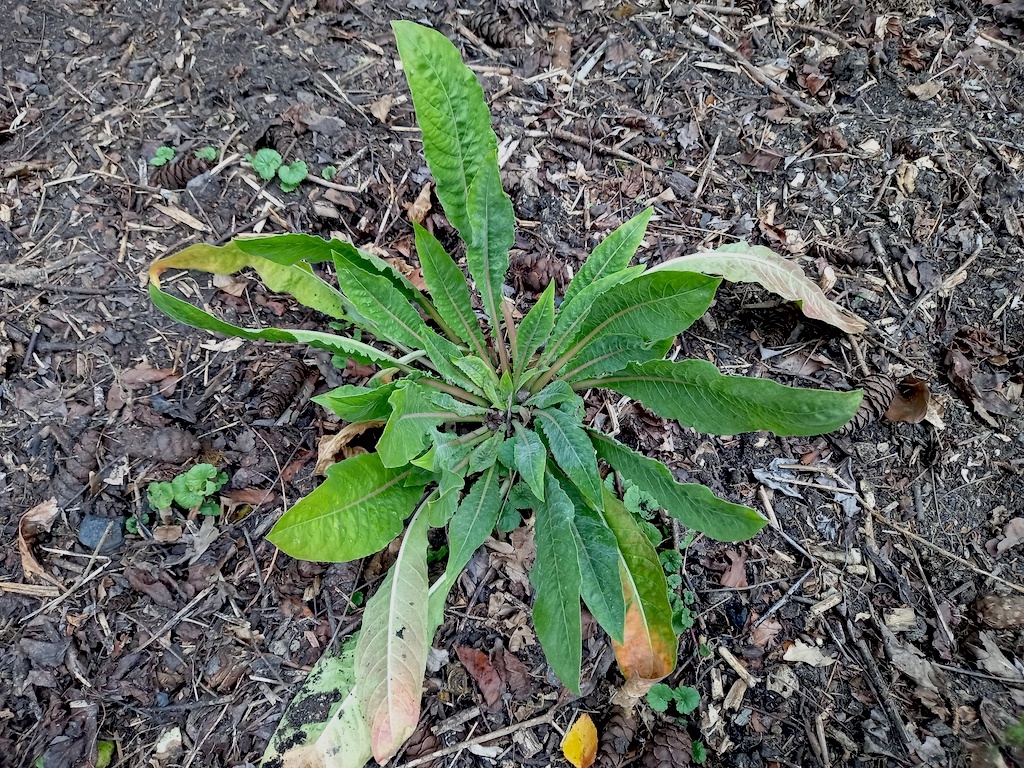
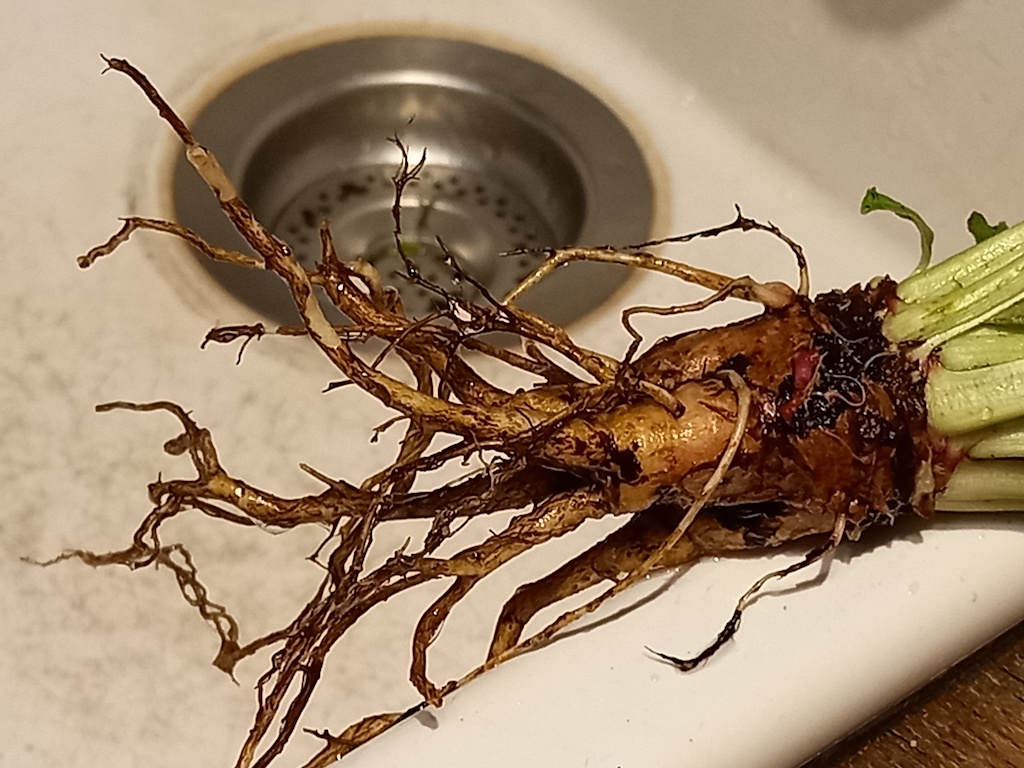
Recipes
Roasted Winter Vegetables
- Carrots
- Potatoes
- Parsnips
- Evening Primrose Roots
- Large onion
- Garlic
Clean and peel/scrub vegetables well. Cut into 2″ chunks. Coat with olive oil and salt. Keep them separate and sprinkle with spices (e.g. sprinkle the parsnips with curry, the carrots with coriander seed powder and the potatoes and evening primrose roots with Chinese 5 spice mix).
Quarter the onion. Separate the garlic into cloves, no need to peel. Preheat the oven to about 425 °F
Place all ingredients on a baking tray and bake for about 30 – 50 minutes on a high shelf. (cooking time depends on the size of the vegetable chunks – check regularly)
You can add a few sprigs of fresh sage and rosemary towards the end for additional flavour. (Putting them in at the beginning would burn them)
Evening Primrose Fritters
Not suitable for ‘fat-free’ fans, but delicious nonetheless.
Prepare a standard batter:
- 2 eggs
- ½ cup milk
- 1 cup flour
- 1 TSP baking powder
- 1 TSP salt
- 1 TSP oil
Cut the Evening Primrose root into long pieces, not too thick, and dip each piece into the batter.
Fry in very hot oil until golden brown.
A deep-fryer works best, but if you don’t have one, pan-frying will do.
Evening Primrose Patties
Cook the Evening Primrose roots until tender (you might want to blend with other root vegetables).
Mash with butter, stir in one egg and a little flour and/or oats to make a sticky dough.
Season to taste. Form little patties and pan-fry on each side until golden brown.
Shop for Evening Primrose oil at Starwest Botanicals. (Affiliate link)
More articles:
Foraging: Evening Primrose (Oenothera biennis)
Evening Primrose is a conspicuous and frequently encountered herb, but did you know that every part of it is edible?
Foraging Wild Asparagus
Early in the spring, one of nature’s most delightful seasonal delicacies is sending up its tender shoots—wild asparagus.
Rosemary – Rosmarinus officinalis
Most of us know this woody, aromatic bush as a culinary herb, but in fact, Rosemary is so much more than that. It has some quite remarkable properties that are well worth remembering. As a kitchen herb, Rosemary is an old stand-by: Rosemary potatoes, Rosemary chicken,...
Foraging Chickweed
Chickweed is a little sprawling herb with heart-shaped leaves and star-shaped flowers that belongs to the Pink family. Gardeners hate it.
Making Birdseed Feeders
During the winter, birds don’t always find enough food. Learn how to make simple birdseed feeders with very few materials, in next to no time
Preserving the Harvest (1)
This article is about various methods to preserve the harvest. Making your own pickles and preserves, jams and chutneys, liqueurs and canned veggies is a great way to celebrate the harvest
Plant Profile: St. John’s Wort
This plant profile of St. John’s Wort tells the stories, traditions, and medicinal uses of St John’s Wort.
Gardening Jobs in July
This is the time of the year that every gardener is waiting for! The garden is in its prime. Everything is grown, flowering and fruiting, and it is a sheer joy to be out there enjoying nature’s bounty.
Gardening Jobs in May
What gardening jobs are there to do in May? Actually, there are plenty. May is one of the busiest gardening months. Sowing, planting, weeding, maintenance and more – there is plenty to do.
Gardening Jobs for March
What gardening jobs are there to do in March? This is a quick guide to what to do and sow in the garden in March.
Gardening Jobs in February
Even as early as February, there are things you can do to kick off the gardening season and get a nice head start.
What is Foraging?
What is foraging, why do people forage, what are wild edible plants and what skills do foragers need to learn?



